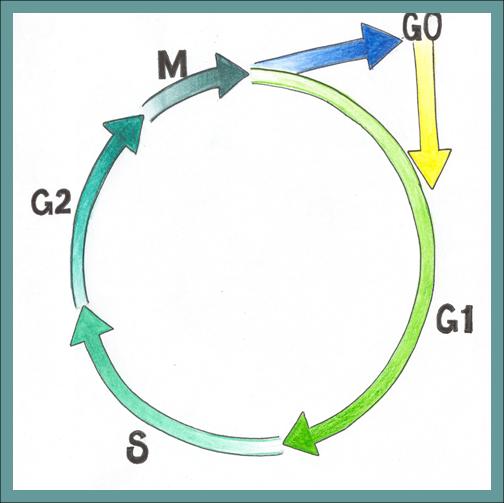Radiobiology is the study of how radiation therapy interacts with cancer cells and normal cells.
Radiotherapy damages the DNA causing double strand breaks which are un-repaired or mis-repaired. This leads to cell death.
- Some tumors are very sensitive to radiation treatment, or radiosensitive - for example lymphomas and seminomas.
- Some tumors are quite insensitive, or radioresistant - for example melanoma.
- Lack of Oxygen (hypoxia) in the center of tumors leads to radioresistance.
- Chemotherapy acts as a radiation sensitizer (makes the RT more effective) and can also make side effects from radiation more severe.
- All cancer cells vary in sensitivity depending on their position in the cell cycle.
CELL CYCLE
Gap 0 (G0) = resting phase. Cells not dividing
Gap 1 (G1) = post mitotic phase. Enzymes necessary for DNA synthesis produced. Protein and RNA synthesis
Synthesis (S) = Cellular DNA duplicated
Gap 2 (G2) = premitotic phase. Precursors of mitotic spindle produced.
Mitosis (M) = Cell division in 4 step process:
- prophase
- metaphase
- anaphase
- telophase
Cells are most sensitive to radiotherapy in mitosis (M) and early in the DNA synthesis phase (S).
Cells in G2 and late S phase have the least sensitivity to radiation.

Normal tissues can repair damage from RT better than cancer cells.
Waiting at least 6 hours between radiotherapy treatments gives normal tissue the chance to repair and this is why radiation therapy is split up into small amounts or "fractions."

